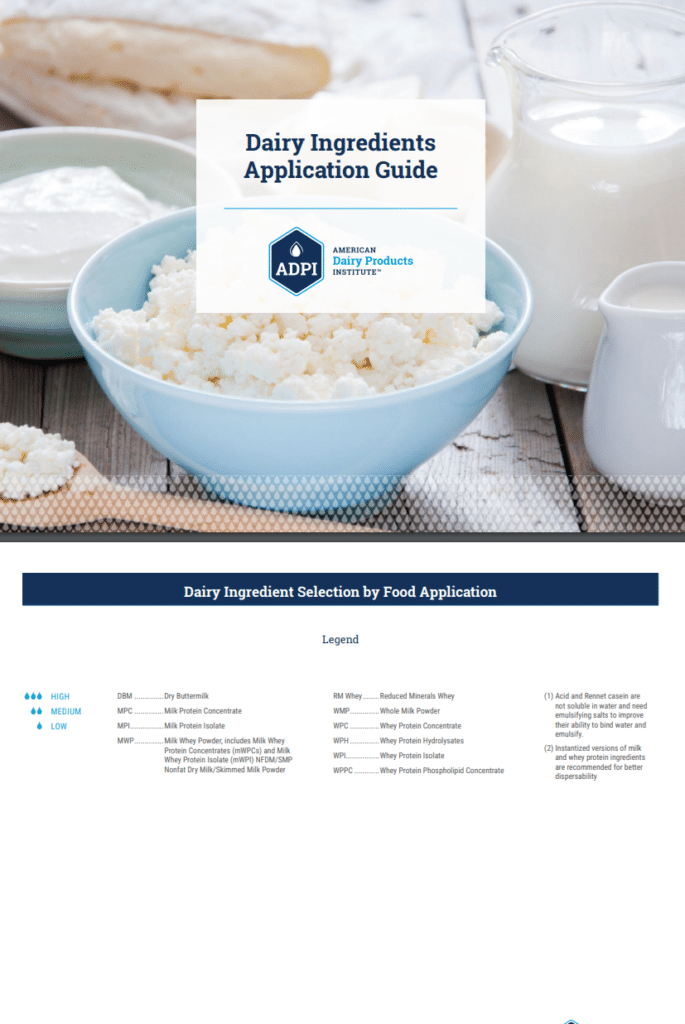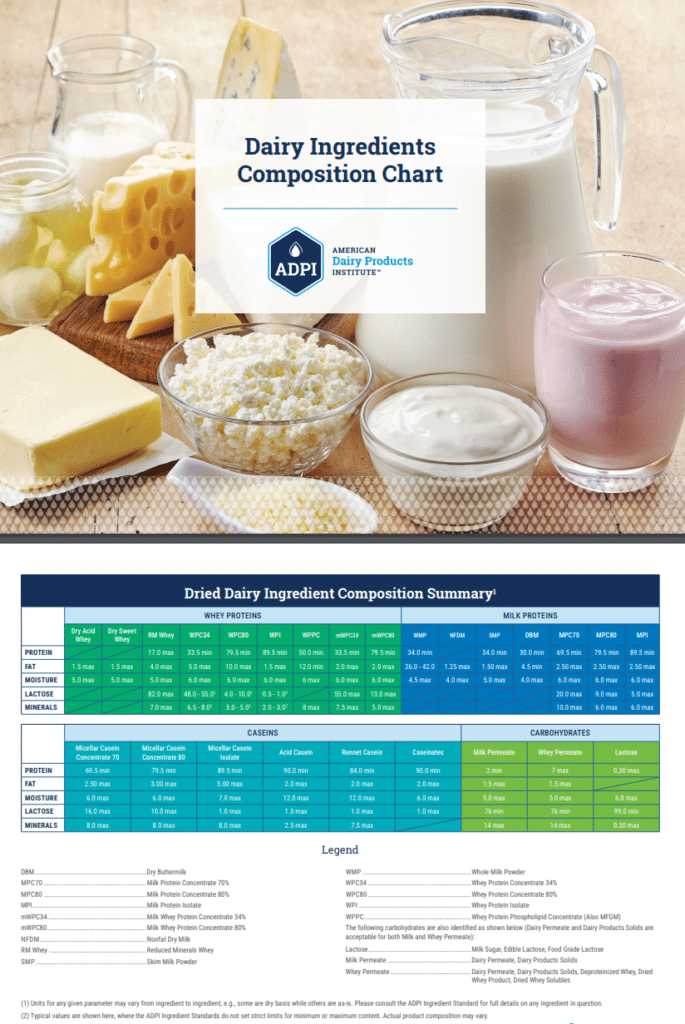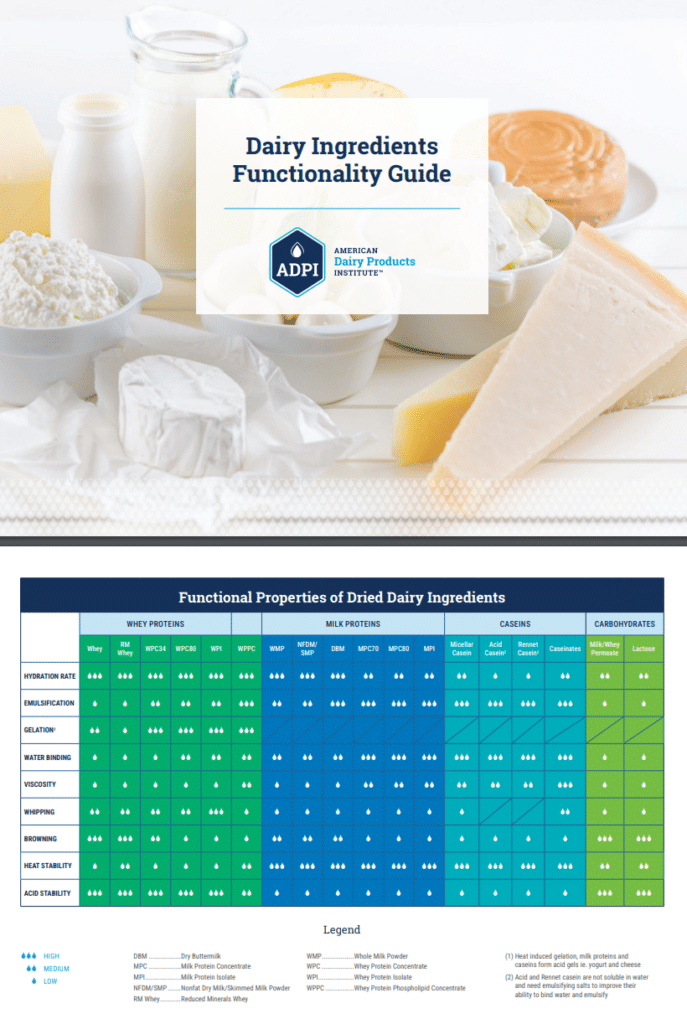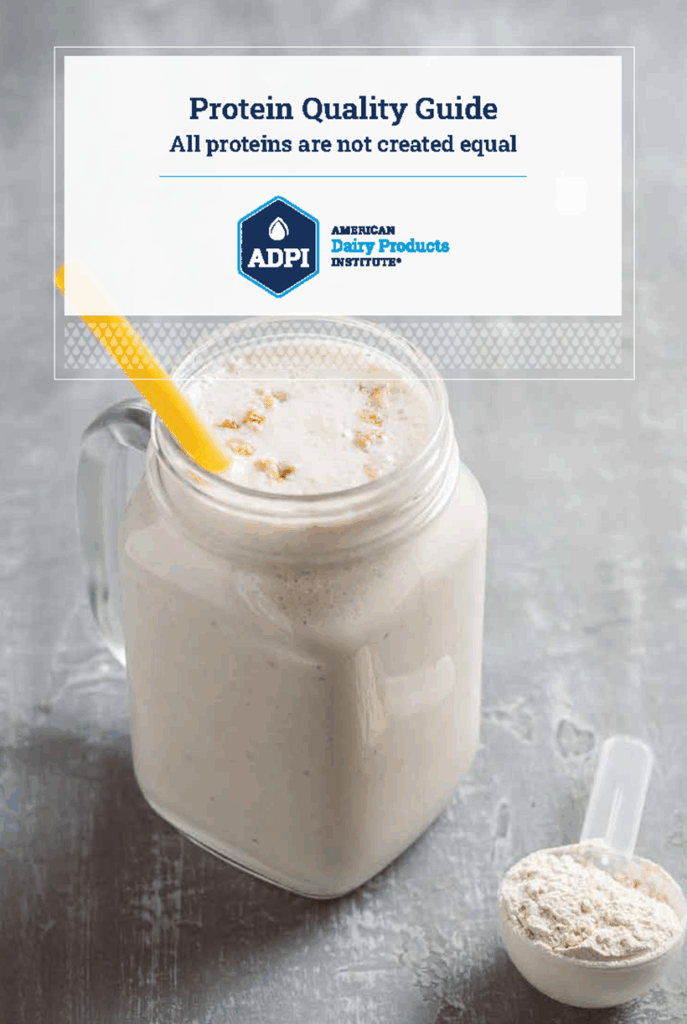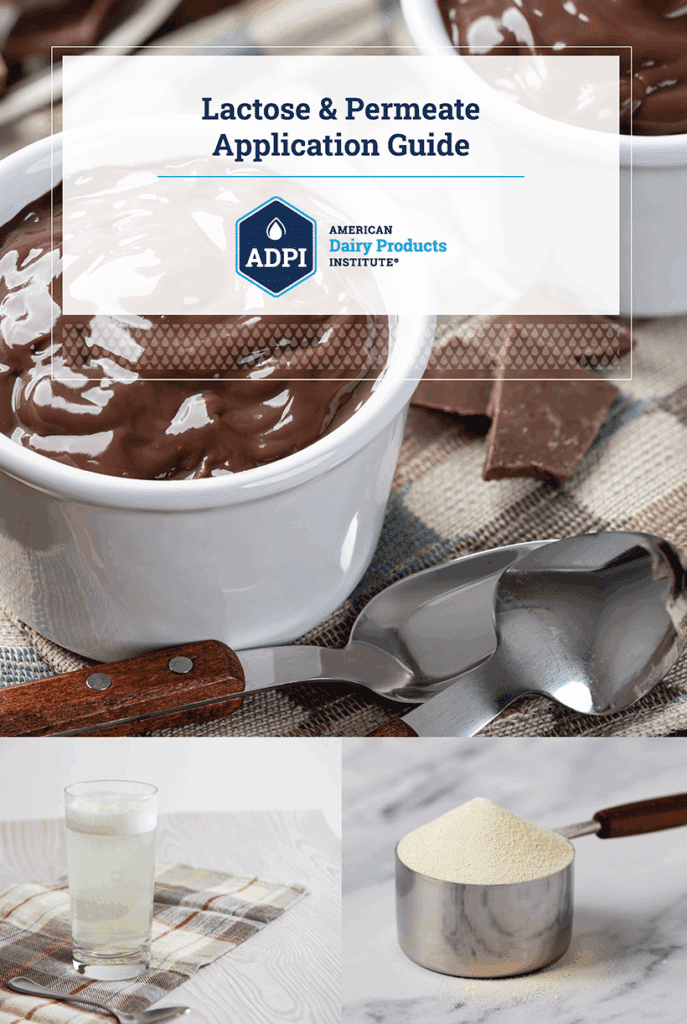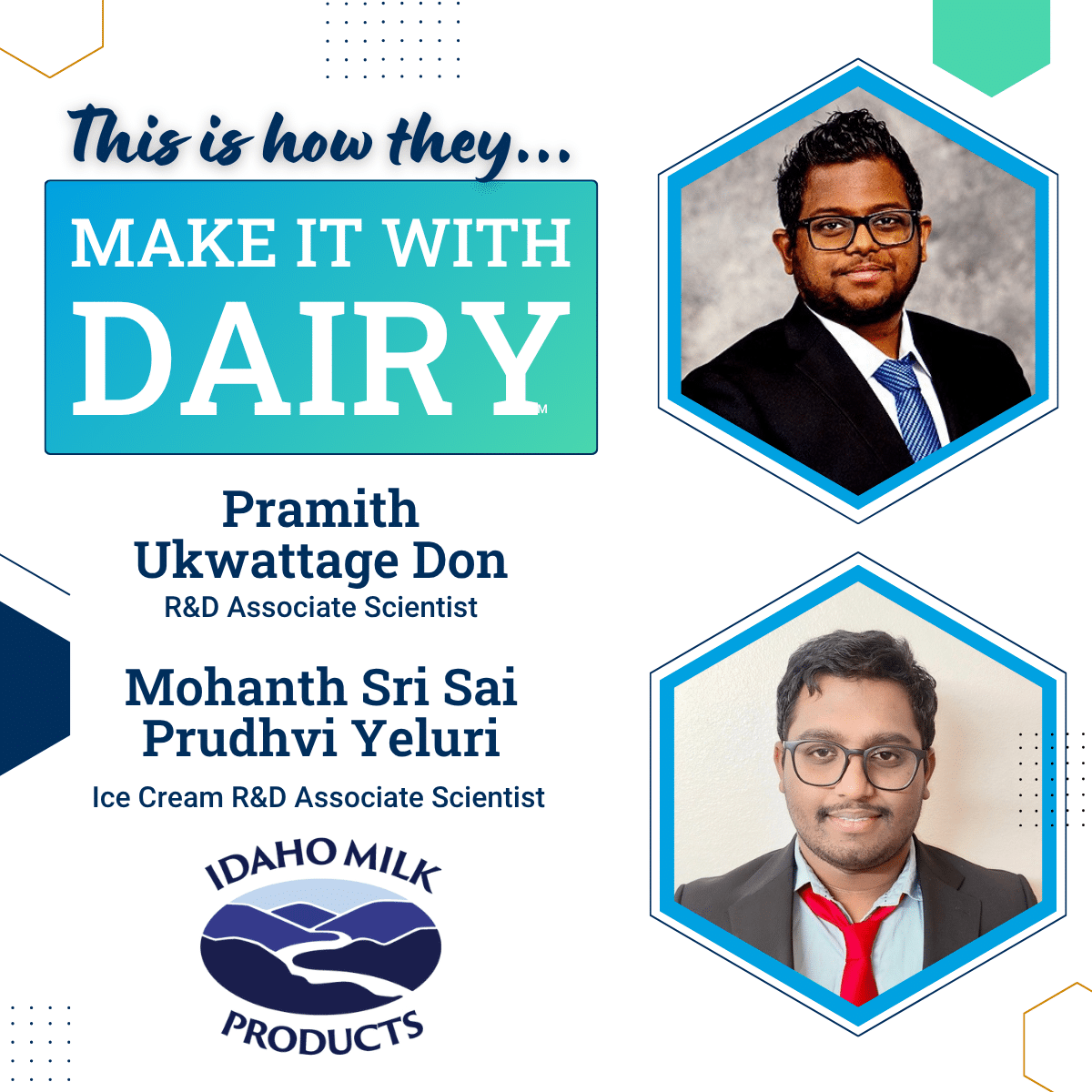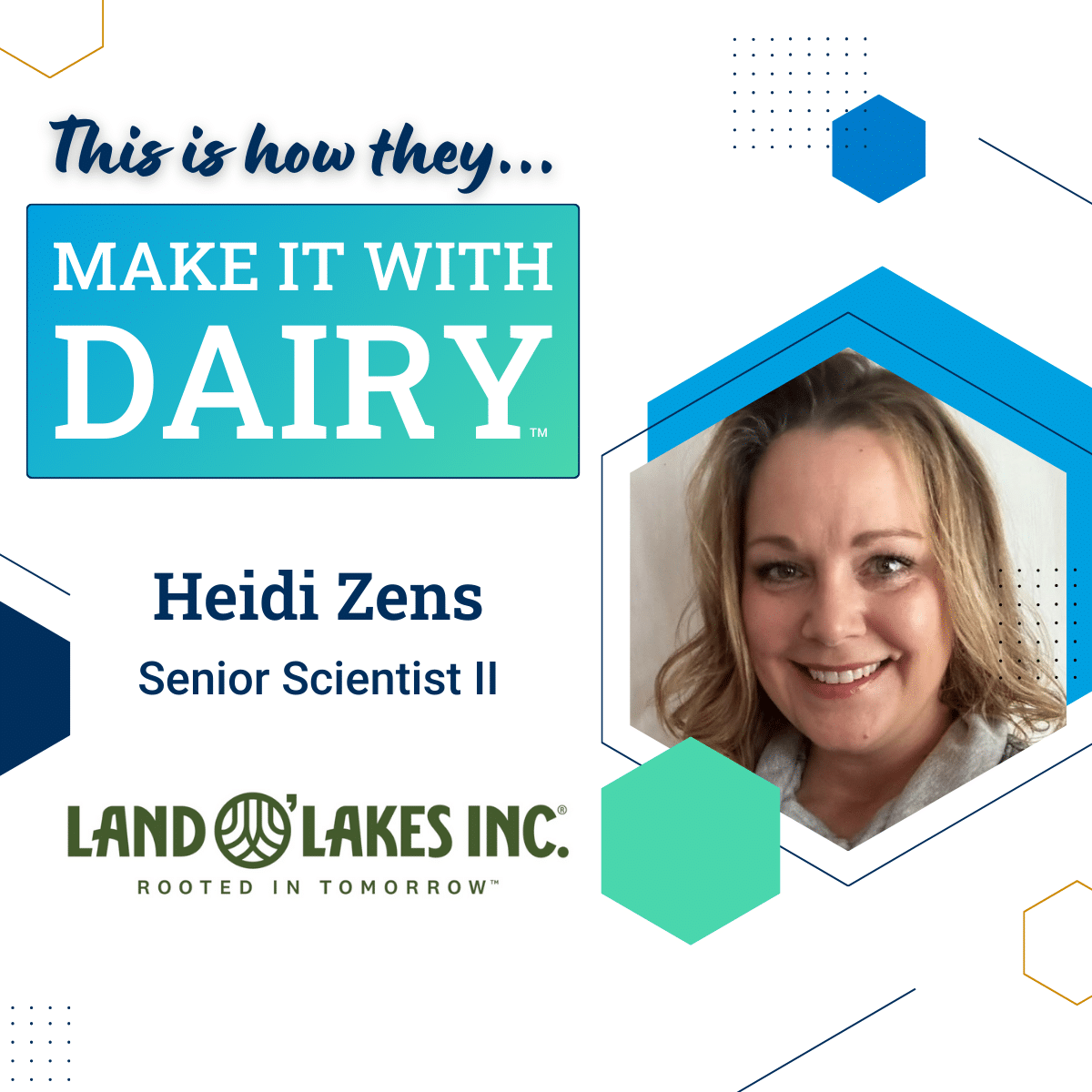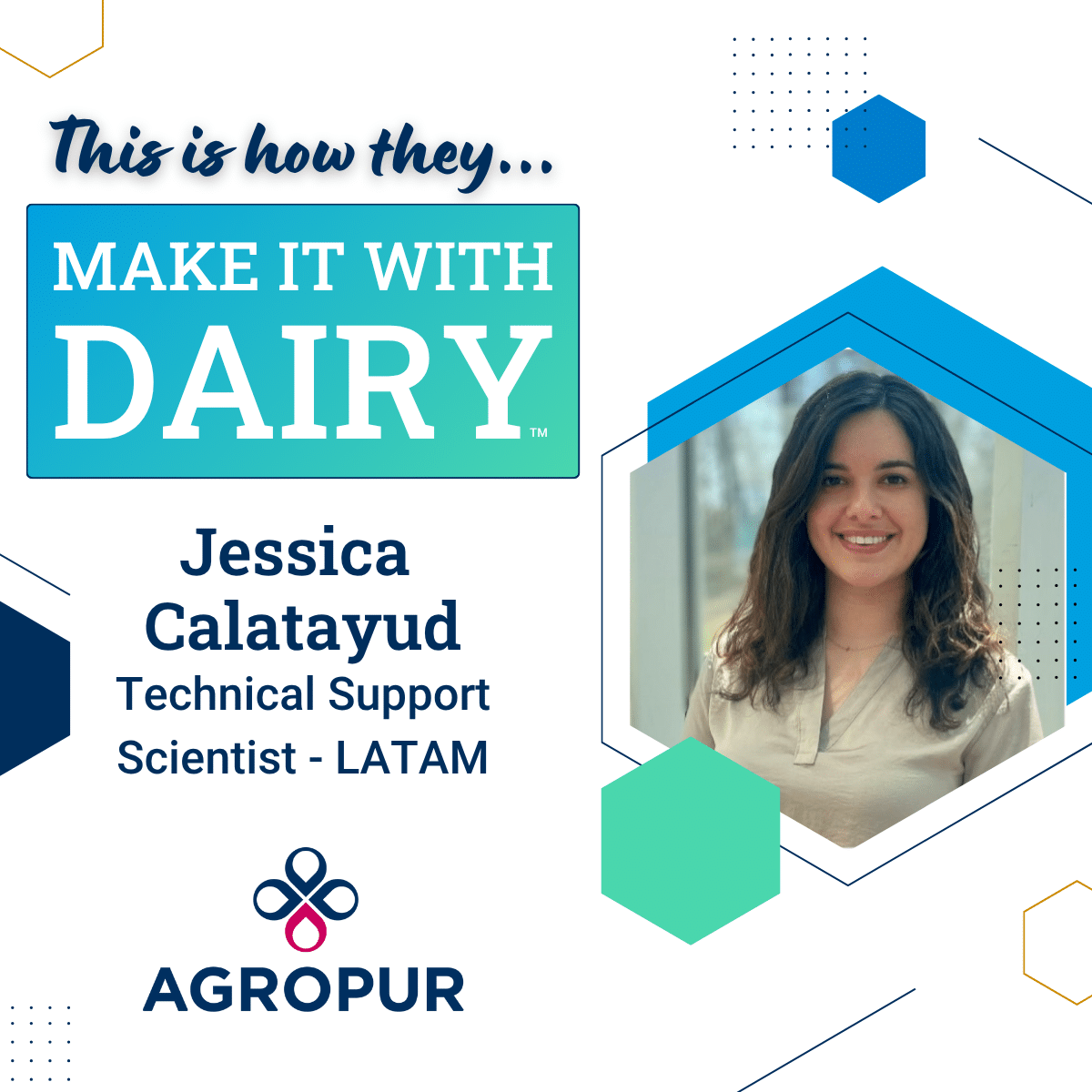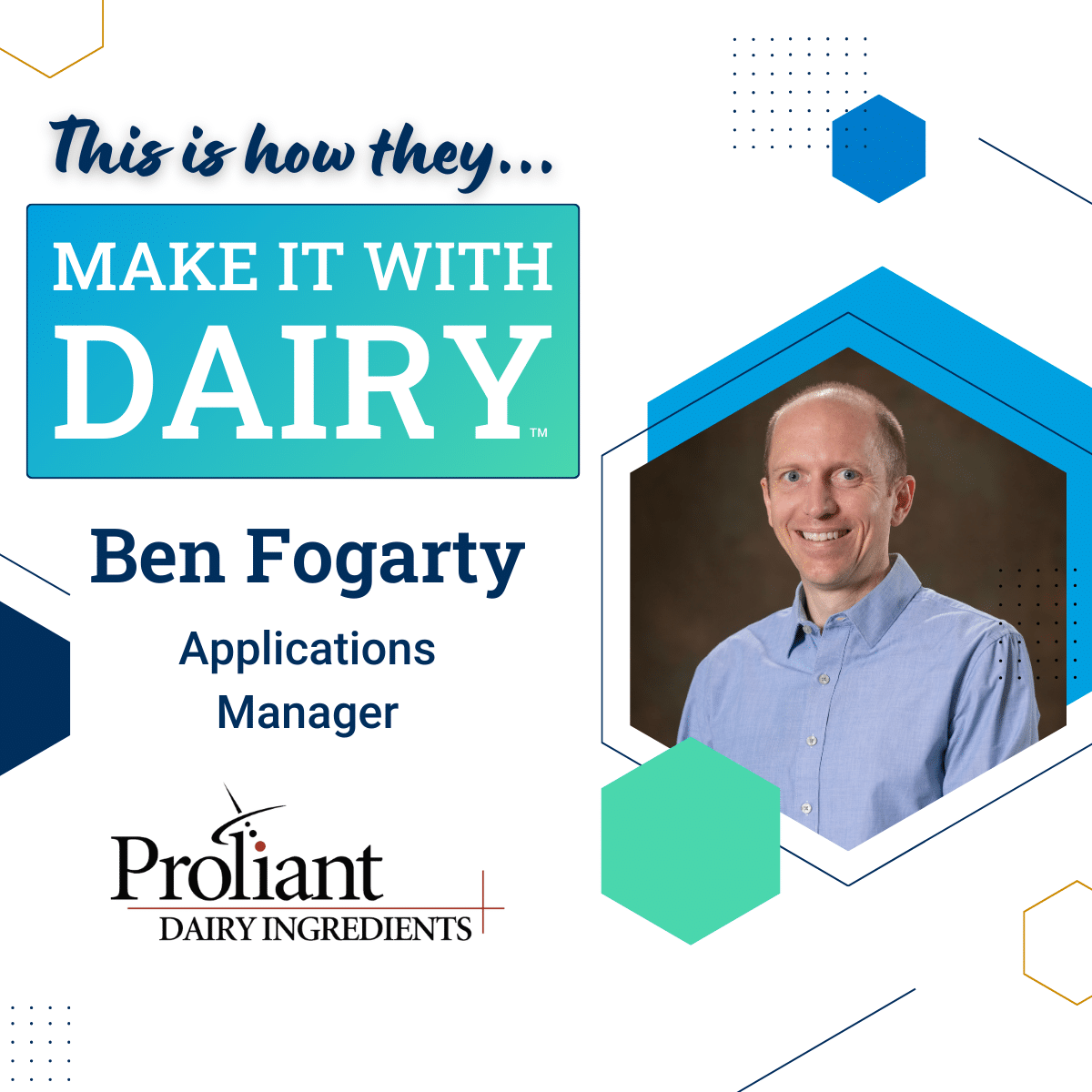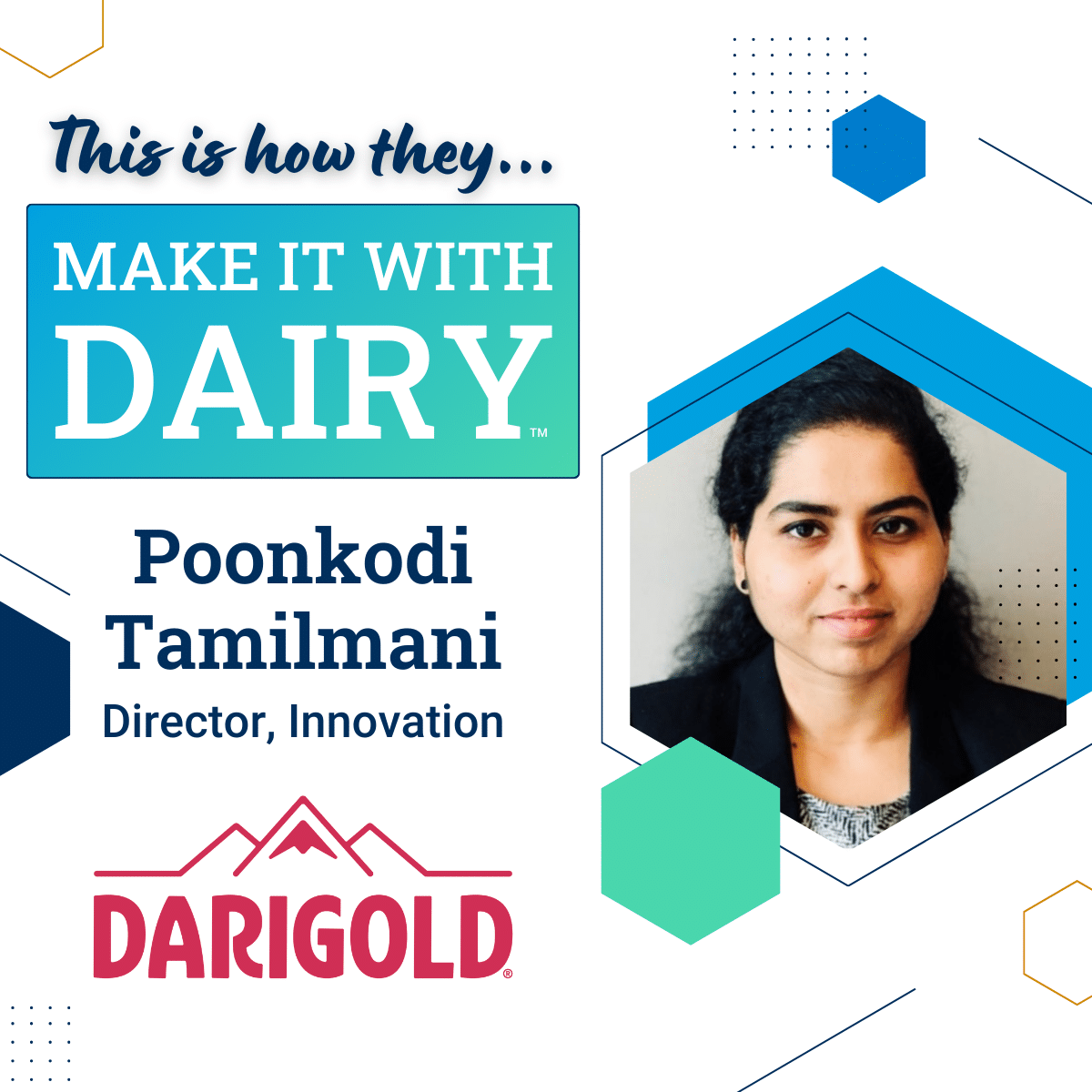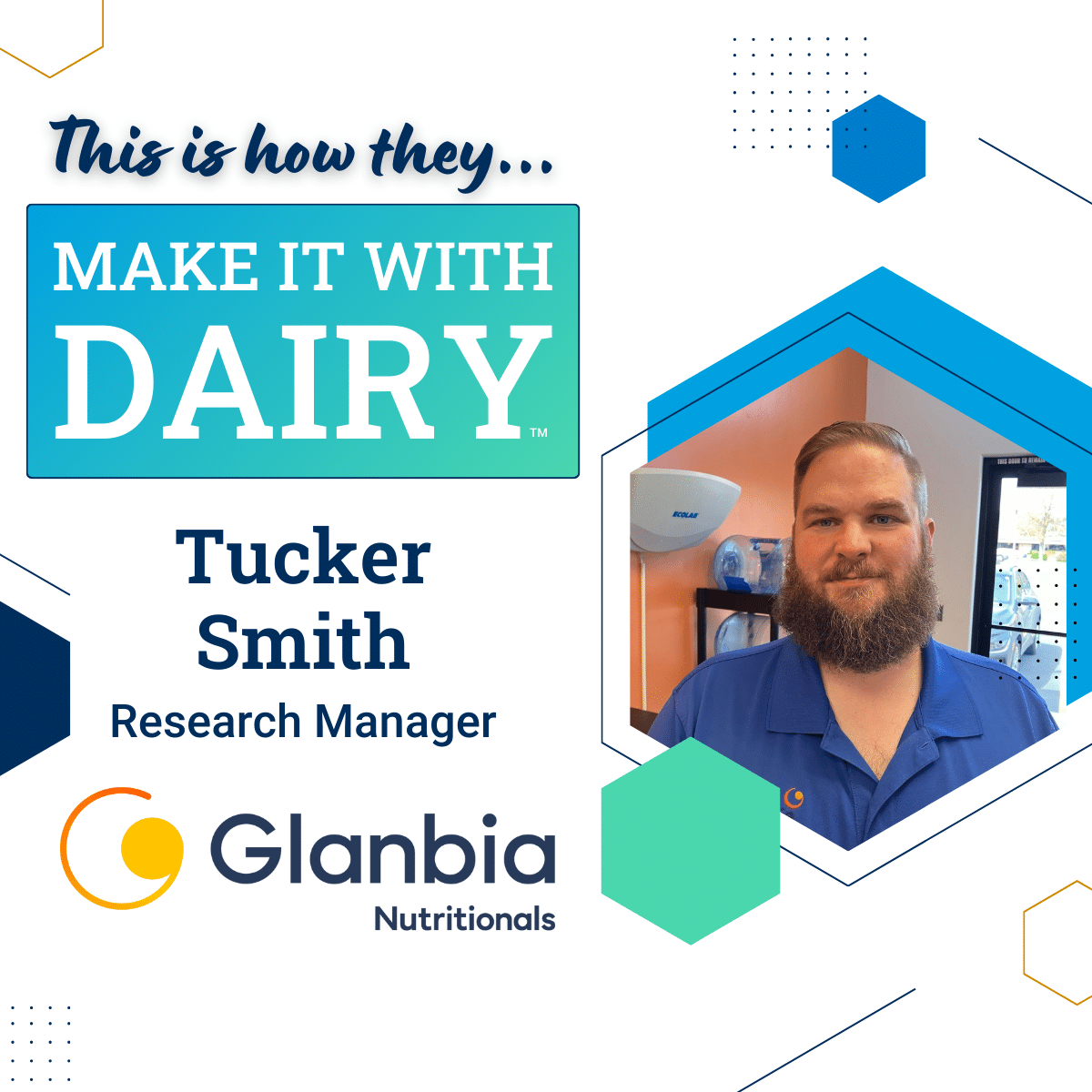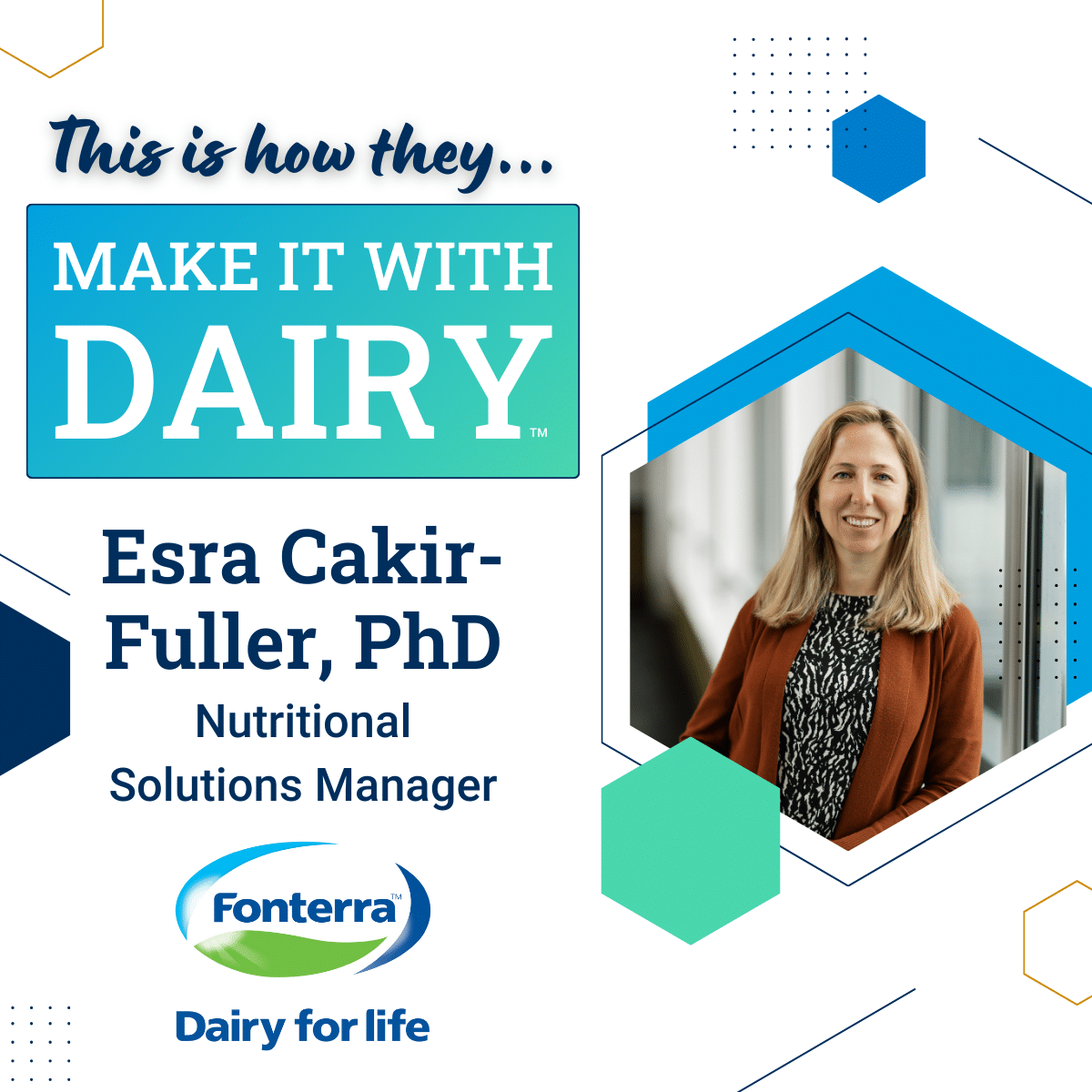
Formulate & Innovate with Dairy Ingredients
Formulate & Innovate with Dairy Ingredients
Getting to know each dairy ingredient by its composition is the first step in understanding its performance and matching the right ingredient with the target food application.

Formulate & Innovate with Dairy Ingredients
Getting to know each dairy ingredient by its composition is the first step in understanding its performance and matching the right ingredient with the target food application.
Get the Guides

Formulating with Dairy Ingredients
Proteins
Dairy protein composition can be the biggest differentiator between ingredients because there are two distinct groups of proteins in milk: caseins and whey proteins. Dairy ingredients are comprised of ingredients with a range of protein levels from zero to over 90%. The products that contain protein may have only caseins or whey proteins or varying combinations of caseins and whey proteins.
Caseins and whey proteins are very different in their structure and function but the best part of these differences are that if one doesn’t work, then it is likely that the other one will. For instance, caseins are quite heat-stable, so they have a multitude of applications in products that undergo heat treatment (e.g., shelf-stable low-acid (pHA measure of the acidity or alkalinity of a material. The pH scale ranges from 0 (acid) to 14 (alkaline) with 7 considered neutral. pH is a measure of the concentration of hydrogen ions and is defined as the negative log of the hydrogen ion concentration. More 6.5-7) beverages). On the other hand, wheyLiquid obtained from cheese manufacture. More proteins are stable in acidic conditions, so they remain soluble and clear in low pHA measure of the acidity or alkalinity of a material. The pH scale ranges from 0 (acid) to 14 (alkaline) with 7 considered neutral. pH is a measure of the concentration of hydrogen ions and is defined as the negative log of the hydrogen ion concentration. More (pHA measure of the acidity or alkalinity of a material. The pH scale ranges from 0 (acid) to 14 (alkaline) with 7 considered neutral. pH is a measure of the concentration of hydrogen ions and is defined as the negative log of the hydrogen ion concentration. More < 3.5) beverages (though caseins would precipitate). Micellar caseinDry form of microfiltered (MF) milk. A portion of the whey proteins have been removed so that the casein to whey protein ratio is no longer the 80:20 ratio typical in milk. Ratio of casein to whey proteins typically ranges between 82:18 and 95:5. Product may also be referred to as native phosphocasein. More and caseinates are more effective at water-binding, while whey proteinProtein in milk that remains in water phase after casein precipitates. More concentrates have superior foaming properties, egg-replacement and fat-replacement capabilities.
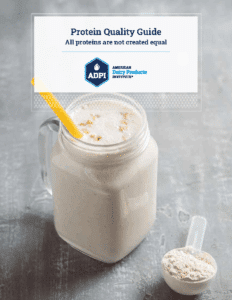
Carbs, Bioactives & Probiotics

Milkfats
Milk fatsOrganic compounds that are combinations of alcohols and acids. Fats contain carbon, oxygen and hydrogen and have a glycerol backbone with fatty acids attached. Fats are not soluble in water but are soluble in organic solvents such as ether and alcohol. More provide flavor, nutrition and functionality. Fat-rich dairy ingredients include AnhydrousWithout water. Example: α-anhydrous lactose is α-lactose that does not contain a molecule of water associated with its structure. milkfat (99.8% min), ButteroilWater in oil emulsion that has at least 99.3% fat and is made by removing most of the water and milk-solidsnot-fat. (99.3% min), ButterA water in oil emulsion of fat globules, water and minerals made by churning cream from milk. Butter has at least 80% fat and can approximately 1.2% salt added. (80% min), whole milk powder (WMP, 26% min), and whey proteinProtein in milk that remains in water phase after casein precipitates. More phospholipid concentrate (WPPCWhey protein phospholipid concentrate More 12% min).
Milk fat contains predominantly saturated fatty acids, along with some mono-unsaturated and poly-unsaturated fatty acids. The Dietary Guidelines for Americans continue to recommend consumption of low fat and fat free dairy products, and limitation of saturated fatsOrganic compounds that are combinations of alcohols and acids. Fats contain carbon, oxygen and hydrogen and have a glycerol backbone with fatty acids attached. Fats are not soluble in water but are soluble in organic solvents such as ether and alcohol. More to <10% of daily calories. However, a multitude of research has shown that all dairy products, even full-fat dairy foods, are associated with positive health outcomes. Here are some recent examples from peer reviewed literature.
- Dairy foods and dairy fat consumption are associated with reduced prevalence of type 2 diabetes and hypertension (4)
- Dairy foods–regardless of the fat content–are associated with reduced risk of metabolic syndrome (4)
- A diet comprised of higher amounts of fruit, vegetables, nuts, legumes, fish, and whole-fat dairy is associated with lower CVD and mortality in all world regions, especially in countries with lower income where consumption of these foods is low (5).
- Cheese consumption was found to be inversely associated with all-cause mortality cardiovascular mortality, incident cardiovascular disease (CVD) , coronary heart disease (CHD), stroke, estrogen receptor-negative (ER-) breast cancer, type 2 diabetes, total fracture, and dementia (6).
Bioactives Compounds
Dairy ingredients are rich in bioactive compounds, including the casein glycomacropeptide, oligosaccharidesComplex carbohydrates that limit the attachment of microorganisms to the intestine. More, alpha-lactalbumin, lactoferrinIron binding protein that can inhibit the growth of certain bacteria such as E. coli More, osteopontin, and milk fat globule membrane components. Not only do bioactives provide nutrition, but they also have biological functional properties such as bone homeostasis improvement, mineral absorption promotion, immune regulation, antioxidant properties, antimicrobial action, and intestinal health improvement.
Bioactive peptides derived from milk, eggs, fish and marine byproducts have been shown to regulate adipogenesis, lipid metabolism, and appetite control, suggesting promise for obesity prevention and management applications (7).
Lactic acid bacteria used to produce fermented dairy products are able to produce a variety of bioactive compounds during fermentation, including bioactive peptides, bacteriocins, and vitamins (8).
Addition of bioactive milk components to infant formula and functional foods has improved qualityFocus on doing things well and producing a product acceptable to consumers More of life and contributed to healthy aging (9).
Dairy Ingredient Application Guides
Meet ADPI Members who are Making it with Dairy!
(3) Weinborn, V.; Li, Y.; Shah, I.M.; Yu, HHydrogen More.; Dallas, D.C.; German, J.B.; Mills, D.A.; Chen, X.; Barile, D. Production of functional mimics of human milk oligosaccharidesComplex carbohydrates that limit the attachment of microorganisms to the intestine. More by enzymatic glycosylation of bovine milk oligosaccharidesComplex carbohydrates that limit the attachment of microorganisms to the intestine. More. Int. Dairy J. 2020, 102, 104583.
(4) Bhavadharini, B, M Dehghan, A Mente, S Rangarajan, P Sheridan, Viswanathan Mohan, Romaina Iqbal, R Gupta, S Lear, E Wentzel-Viljoen, A Avezum, P Lopez-Jaramillo, P Mony, R P Varma, R Kumar, J Chifamba, KPotassium More F Alhabib, NNitrogen More Mohammadifard, A Oguz, F Lanas, D Rozanska, KPotassium More B Bostrom, KPotassium More Yusoff, L P Tsolkile, A Dans, A Yusufali, A Orlandini, P Poirier, R Khatib, B Hu, L Wei, L Yin, A Deeraili, KPotassium More Yeates, R Yusuf, NNitrogen More Ismail, D Mozaffarian, KPotassium More Teo, S S Anand, S Yusuf. 2020. Association of dairy consumption with metabolic syndrome, hypertension and diabetes in 147 812 individuals from 21 countries. BMJ Open Diabetes Res Care. 8(1):e000826. doi: 10.1136/bmjdrc-2019-000826
(5) Mente, A, M Dehghan, S Rangarajan, M O’Donnell, W Hu, G Dagenais, A Wielgosz, S A. Lear, L Wei, R Diaz, A Avezum, P Lopez-Jaramillo, F Lanas, S Swaminathan, M Kaur, KPotassium More Vijayakumar, V Mohan, R Gupta, A Szuba, R Iqbal, R Yusuf, NNitrogen More Mohammadifard, R Khatib, NNitrogen More M Nasir, KPotassium More Karsidag, A Rosengren, A Yusufali, E Wentzel-Viljoen, J Chifamba, A Dans, KPotassium More F Alhabib, KPotassium More Yeates, KPotassium More Teo, HHydrogen More CCarbon More Gerstein, S Yusuf. 2023. Diet, cardiovascular disease, and mortality in 80 countries, European Heart Journal, Volume 44, Issue 28, 21 July 2023, Pages 2560–2579, https://doi.org/10.1093/eurheartj/ehad269
(6) Mingjie Zhang, Xiaocong Dong, Zihui Huang, Xue Li, Yue Zhao, Yingyao Wang, Huilian Zhu, Aiping Fang, Edward L. Giovannucci. 2023. Cheese consumption and multiple health outcomes: an umbrella review and updated meta-analysis of prospective studies. Advances in Nutrition, 14(5):1170-1186
(8) Sorensen, HM, KD Rochfort, S Maye, G Macleod, CCarbon More Loscher, D Brabazon, and B Freeland. 2023. Nutrients. 15(22): https://doi.org/10.3390/nu15224754
(9) Mao, X-Y, L-H Han, Q-C Yuan, HHydrogen More Gong, X Y Mao, L HHydrogen More Han, Q CCarbon More Yuan, and HHydrogen More Gong. 2022. J. Food Sci. Tech. 40(2): 15-24.

